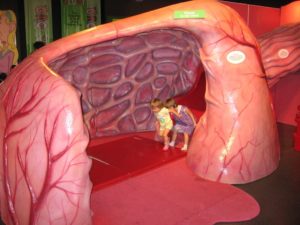
This photo is an image. photo by Marcin Chady
Due to the birth of proton pump inhibitor (PPI) and histamine 2 receptor inhibitor (H2 blocker), the treatment of acid related diseases such as peptic ulcer and reflux esophagitis has advanced dramatically. Currently, some PPIs and H2 blockers are used in the clinic, among which Takecab (ingredient name; Vonoprazan) released in 2015 is attracting attention now.
Stomach acid secretion mechanism and acid inhibitor
Stomach acid is secreted from the wall cells present in the stomach. Stomach acid plays an important role of sterilizing bacteria invading the gastrointestinal tract. However, if the gastrointestinal tract gets weakened or if there is excessive stomach acid, strong acid makes its own body to be hurt and causes inflammation and ulceration. PPIs are effective in suppressing secretion of gastric acid and improving symptoms.
PPIs inhibit gastric acid secretion by acting on a proton pump called H +, K + – ATPase in the mucosal wall cells of the stomach. Conventional PPIs have the property of being activated by acid and inhibit gastric acid secretion by the irreversible binding of active PPIs to proton pump. On the other hand, they have property of being unstable to acids, and it is difficult for PPIs to stay long under acid conditions.
Conventional PPIs are not effective immediately after taking pills and it takes about several days until adequate effect appears.
In addition, it was one of the problems that conventional PPIs are metabolized by CYP2C19. CYP2C19 is a metabolic enzyme that is commonly found in Japanese polymorphisms, and the conventional PPIs are thought to have individual different effects.
Mechanism and effect of Takecab
Takecab is developed to solve these problems. Like the conventional PPIs, Takecab acts on the proton pump to suppress the secretion of gastric acid, but its way of acting on the proton pump is different from conventional PPIs.
Takecab has the property of gathering around wall cells without losing the effect even under acid conditions. The collected Takecab inhibits gastric acid secretion by inhibiting the proton pump reversibly and potassium ion competitively in the proton pump in the wall cell.
In other words, because it is not necessary for activation by acid, the effect appears in short, Takecab is stable under acid condition and the working duration is long. Some paper reported that Takecab can be effective from the first day of taking the dose.
Also, metabolic enzymes are different from conventional PPIs. Takecab is not metabolized by CYP2C19, but is metabolized by CYP3A4 that is less genetically polymorphic in Japanese.Takecab is thought to have less individual differences in effect.
The number of Takecab uses are steadily increasing since launch.It has been used for eradication of Helicobacter pylori bacteria expecting high effect. High success rates about H. pylori eradication with Takecab are reported for both primary and secondary bacteria elimination.
With the appearance of Takecab, it is now possible to expect higher effects against acute gastrointestinal disorders and Helicobacter pylori eradication. New drugs that affects faster and have more appropriate effects will continue to appear in the future.




コメント